Top most beautiful religious buildings #1
Religious and Buddhist works are always invested in a lot of effort and money to show respect and gratitude to noble saints and gods. Those temple structures are also places for people to express their wishes, repentance, and apologies to the supreme gods. In addition, they are also destinations that attract tourists and can be achievements, representing a country or nation. Over the years, these works have remained undiminished in their appeal and attract tourists from all over the world. Let's explore these splendid and artistic works
Haeinsa - Korea
Haeinsa Temple is visited by many tourists every day and has become a spiritual tourist destination for Korean people. The famous Haeinsa temple, also known as Hai An Tu, was built in 802 and located on Mount Gaya, is one of the leading Buddhist temples in Korea.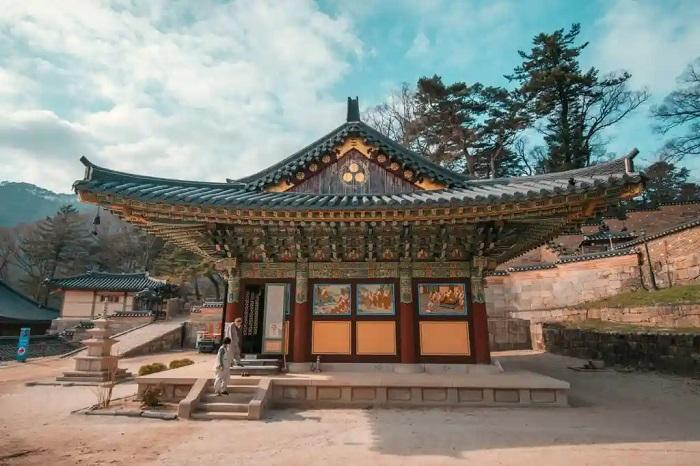
Haeinsa Temple is known not only for its outstanding architecture but also because it is home to Tripitaka Koreana - a set of ancient Buddhist scriptures. Tripitaka Koreana is a collection of more than 81,258 wooden panels with Buddhist scriptures engraved on them and has been kept here since 1398. The Janggyeong Panjeon building in Haeinsa (where the Buddhist scriptures are kept) has been listed as a Heritage Site. UNESCO World Heritage site in 1995 and became one of nine World Heritage sites in Korea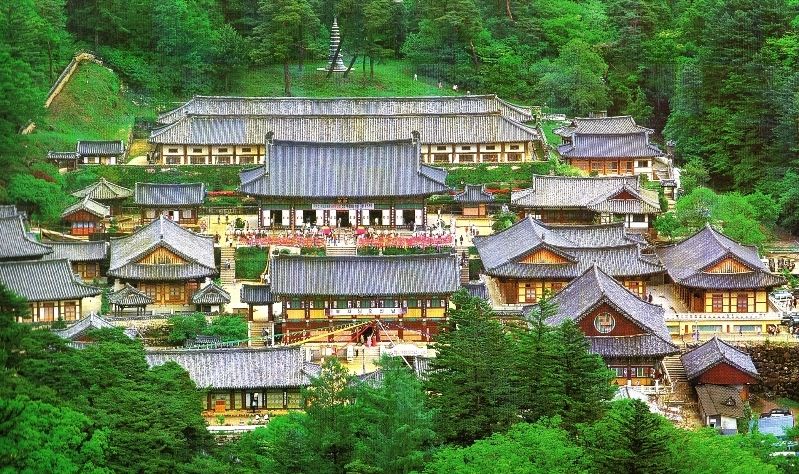
Haeinsa Temple is not only a place that attracts domestic Buddhists to make pilgrimages, recite Buddha's name,... but also attracts the majority of tourists and scholars from all over the world. Currently, there are nearly 500 monks living at this temple, they study and protect Tripitaka Koreana.
Todaiji - Japan
Todaiji - Also known as Eastern Great Temple, was built in Nara city, Japan in the 8th century by emperor Shomu (701 - 756), becoming one of the most important Buddhist holy sites in the country. Phu Tang. The main hall of the pagoda is known as the largest wooden architectural complex in the world and is home to the black bronze statue of Buddha Vairocana. The temple has a rich history and today the temple still stores many ancient evidences. Todaiji is recognized by UNESCO as "Historic Monument Complex of the Nara Capital Period"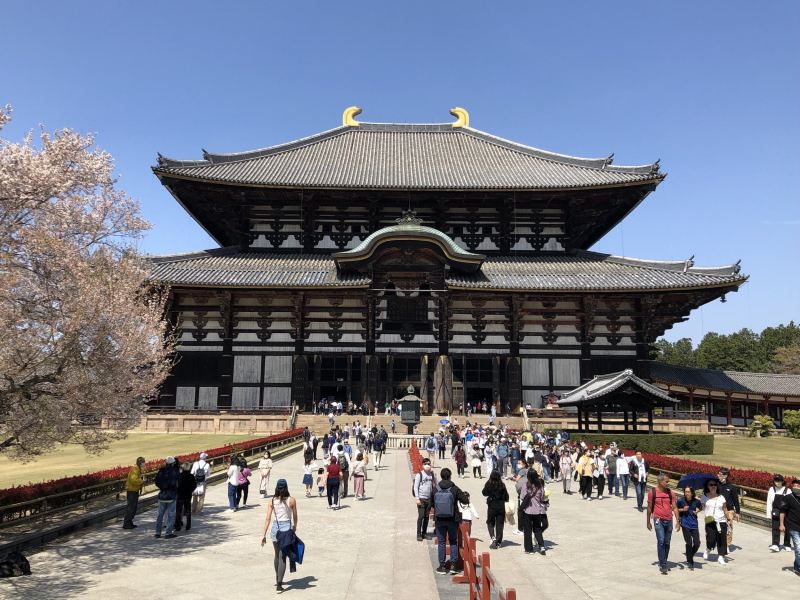
Currently, the pagoda still preserves many exquisitely carved and sculpted ancient wooden statues, along with hundreds of other rare and precious antiques, representing the art of Japanese wood sculpture. Besides, the harmonious and unique landscape garden art with ancient architecture has made Todaiji Temple one of the extremely spectacular historical and spiritual relic complexes of the land of Japan, with great power. Strong and rare attraction, making this place a sacred and attractive place for domestic and foreign tourists.
Wat Rong Khun - Thailand
Wat Rong Khun, also known as the "White Temple" because the temple is covered in pure white and has unique architecture, making this temple a symbol of Thailand. The temple's area is not too large, only about 12,000 square meters, located in Chiang Rai province in the north of the country and the person who came up with the idea of building Wat Rong Khun is Chalermchai Kositpipat - a painter and one of the architects. famous in Thailand. He built this temple all in white because he wanted to symbolize the purity of Buddha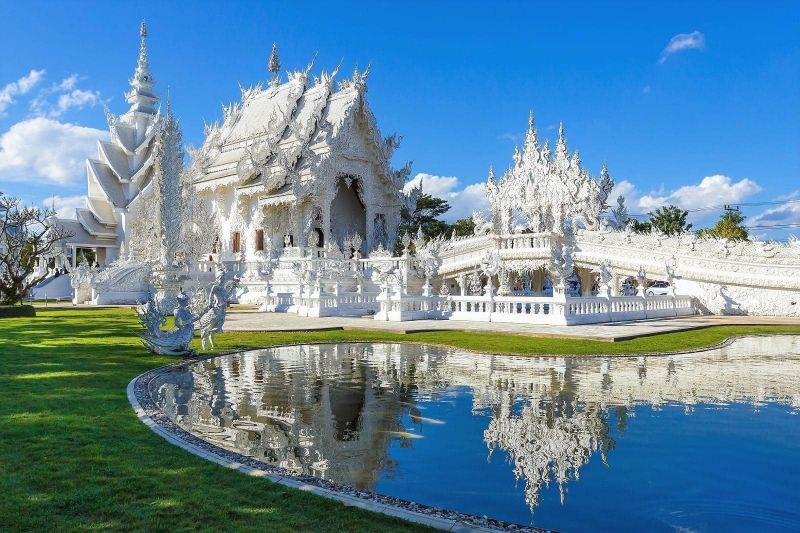
Since the inauguration of the pagoda until now, the White Pagoda has become a sightseeing and tourist destination attracting a large number of domestic and foreign tourists. Surrounding the pagoda is a park with a lake and many handcrafted sculptures with strange architecture, many of which are skulls, demons,... or monsters in Thai folklore. Lan. At any time of the year, the temple's entrance gate is always bustling with visitors from all over the world.
Angkor Wat - Cambodia
Angkor Wat is not simply a complex of Buddhist temples, it is also the heart of Cambodia, a very proud symbol of many generations of people in this country. Coming to explore Angkor Wat - the pearl of the Khmer empire, you will be overwhelmed by the brilliance and grandeur of this architectural wonder.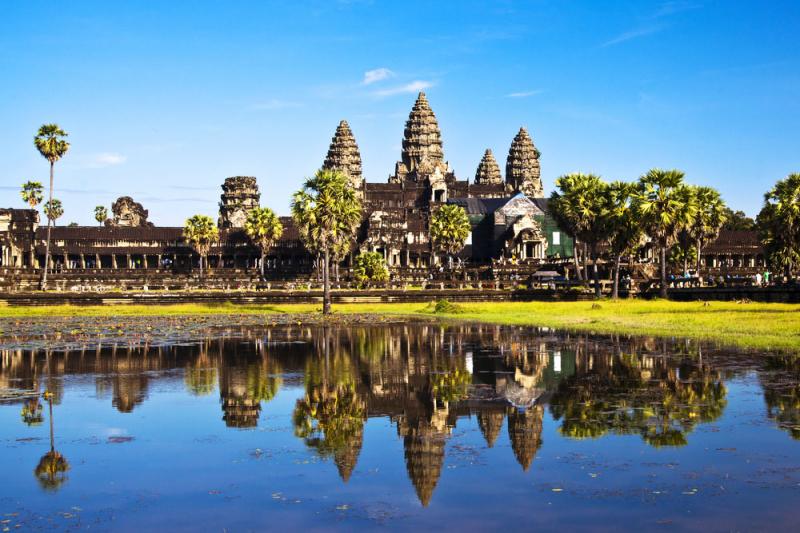
Angkor Wat is a temple complex in Cambodia and the largest religious monument in the world, covering 162.6 hectares, built in the 12th century by the Khmer and one of the most important monuments in Cambodia. Cambodia, considered the pinnacle of Khmer art and architecture. This is the destination that attracts the most domestic and foreign tourists and is considered one of the world's architectural masterpieces.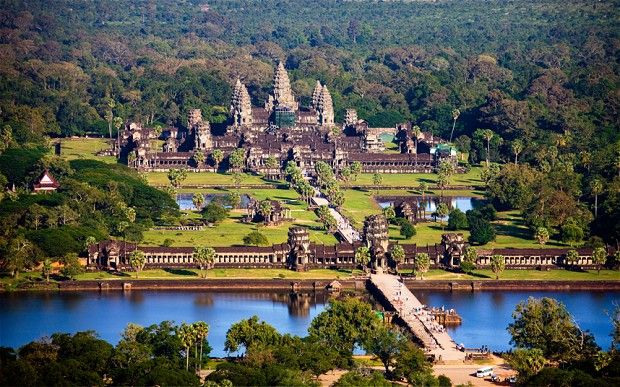
The center of the temple is a combination of 5 towers with a central tower, the remaining 4 towers rotate in 4 different directions, forming the corners of a square. Angkor Wat is different from other temples in Cambodia because this temple faces west. Visitors to Angkor Wat will admire the majestic but harmonious architecture, the cohesion of sculptural art has created many gods carved on the stone walls, both meticulous and majestic.
Temple of Heaven - China
Thien Dan, meaning Altar of Heaven, was built around the first half of the 15th century, in the central area of the Royal garden, surrounded by pine forests on all four sides. This is a protected architectural complex that is still quite intact, not much has changed compared to the original architecture and has a particularly important position in the history of Chinese architecture, as well as an artistic architectural heritage. priceless art of humanity. In 1998, the Temple of Heaven was inscribed on the World Cultural Heritage List by UNESCO.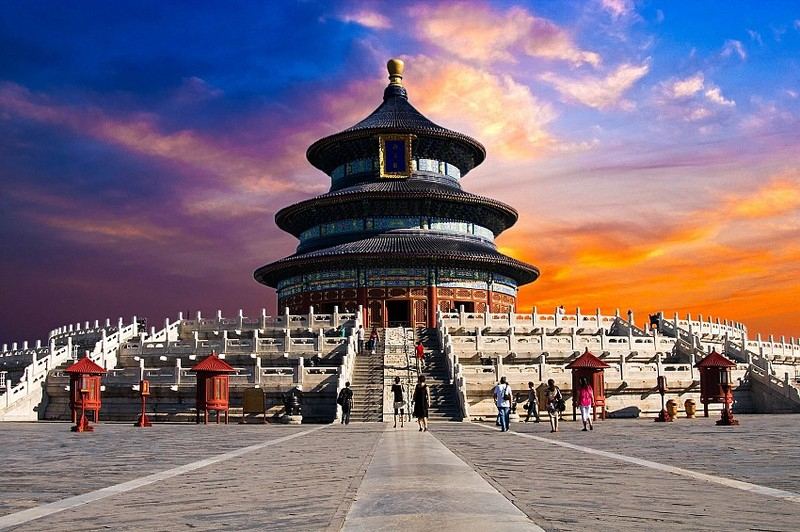
The architecture of the Temple of Heaven was built to symbolize heaven and earth with the southern end wall being square, symbolizing earth, and the northern wall being hemispherical, symbolizing heaven. This type of design originates from the idea of "round sky and square earth" of ancient China. The campus of Thien Dan includes a complex of three works: Vien Khuu, Hoang Khuong Vu and Ky Nien Palace. The layout of all three works is very strict, ensuring both feng shui and Chinese philosophical requirements.





























